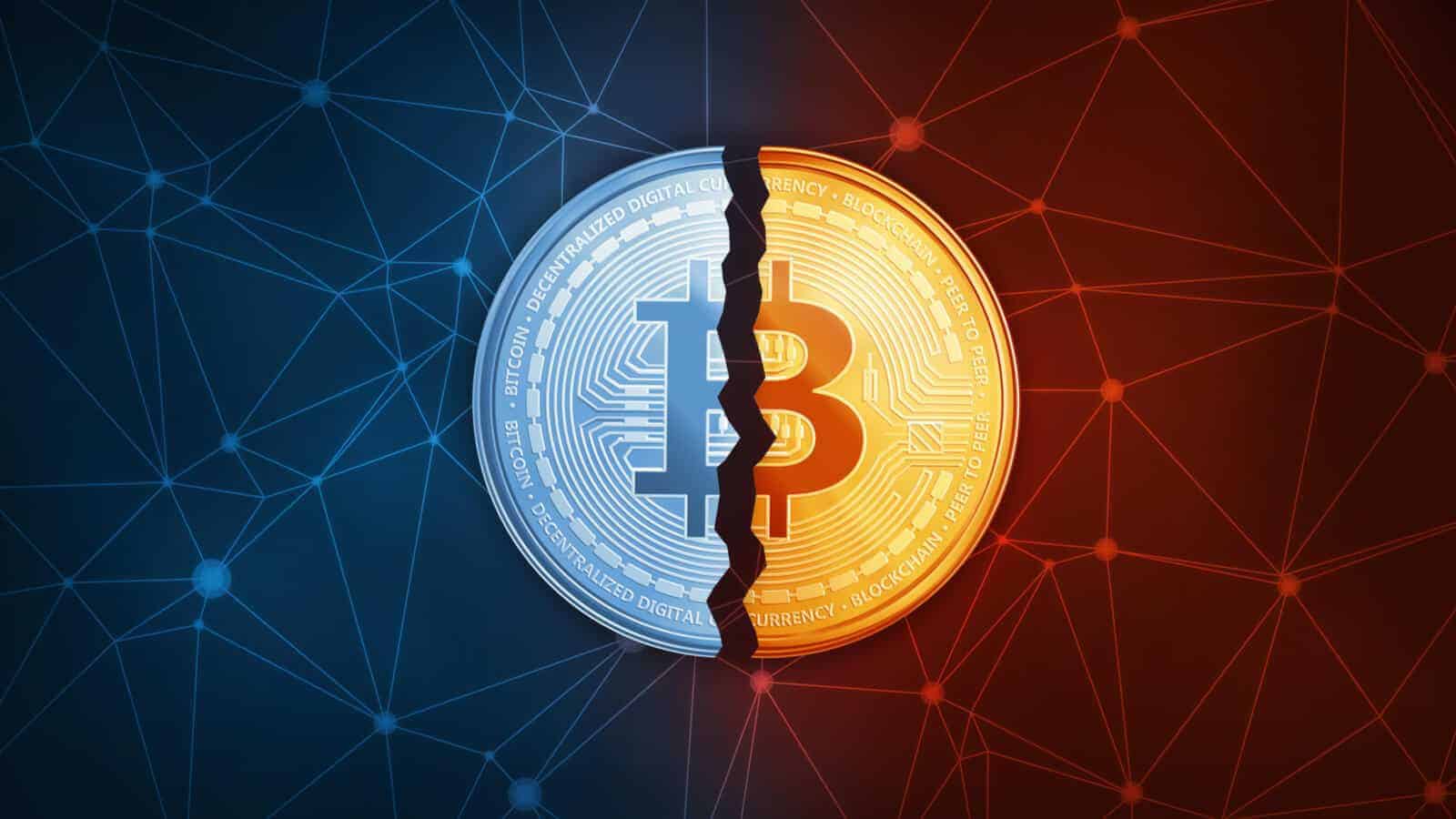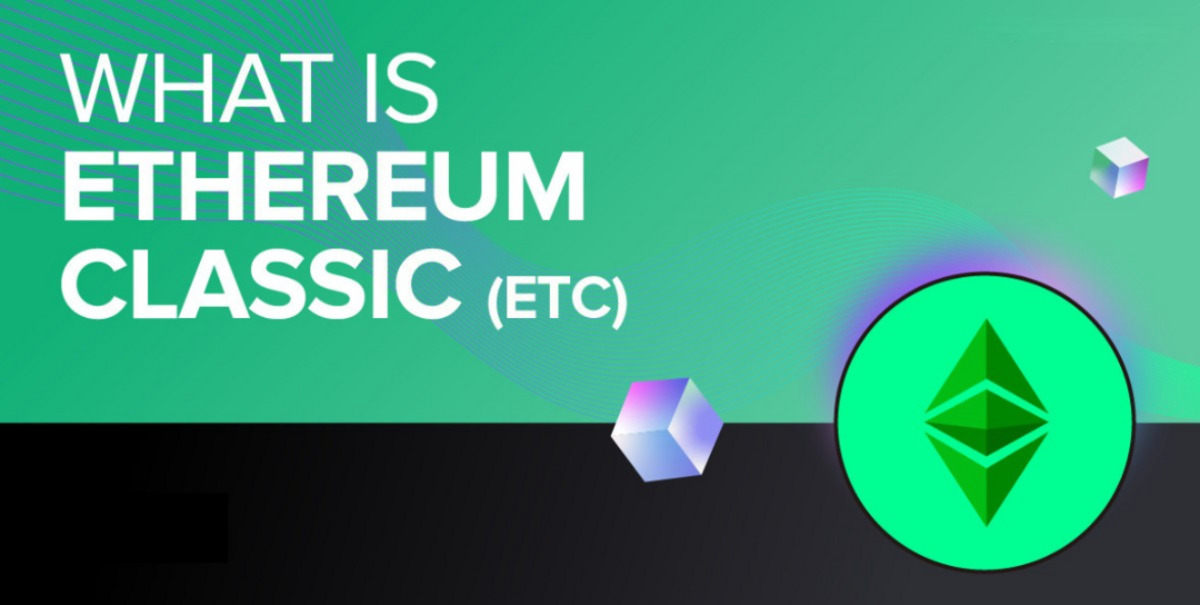Introduction
A blockchain split refers to the phenomenon when a blockchain network divides into two separate chains with differing transaction histories. This occurs when there is a discrepancy or disagreement among the participants of the blockchain network regarding the rules and protocols governing its operation. Blockchain splits can have significant implications for the network and its users, often leading to the creation of new cryptocurrencies and temporary network instability.
A blockchain, in simple terms, is a decentralized and distributed digital ledger that records transactions across multiple computers or nodes. It is designed to be transparent, secure, and tamper-resistant. Each transaction recorded on the blockchain is verified by network participants before being added to a “block” of data. These blocks are then linked together and form a chain of transactions.
However, due to its decentralized nature, disagreements can arise among the participants of a blockchain network. These disagreements can be related to changes in consensus rules, improvements or upgrades to the network, or even malicious activities aimed at disrupting the blockchain. When these disagreements cannot be resolved through consensus or compromise, a blockchain split may occur.
In the following sections, we will explore the different types of blockchain splits, the causes behind them, how they are resolved, and the consequences they can have on the network and its users.
What is a blockchain split?
A blockchain split occurs when a blockchain network divides into two separate chains due to a fundamental disagreement among the participants. This disagreement usually revolves around changes in the rules and protocols governing the blockchain’s operation, such as consensus rules, network upgrades, or consensus algorithm changes.
When a split happens, the blockchain network essentially branches out, with one group of participants following one set of rules and the other group following a different set of rules. This results in two separate chains, each with its own transaction history and potentially creating two distinct cryptocurrencies.
It is important to note that a blockchain split is different from a simple fork, where the chain diverges momentarily but is eventually consolidated again. In the case of a split, the divergence is permanent, and the two chains continue to exist separately.
Blockchain splits can occur for various reasons, including disagreements among developers, conflicting visions for the future of the network, or external attacks. The resolution of a split often requires consensus among the network participants to determine which chain is considered the valid and authoritative version.
Ultimately, a blockchain split represents a fracture within the network and has significant implications for its participants. It can lead to the creation of new cryptocurrencies, temporary network instability, and impact user confidence and trust. In the following sections, we will delve deeper into the different types of blockchain splits, their causes, how they are resolved, and the consequences they can have.
Types of blockchain splits
Blockchain splits can occur in different ways, resulting in various types of splits. These splits are categorized based on the level of consensus among network participants and the extent of the divergence between the chains. The three main types of blockchain splits are hard forks, soft forks, and chain splits.
1. Hard fork
A hard fork refers to a permanent divergence in the blockchain, resulting in two separate chains that are not compatible with each other. In a hard fork, the changes made to the network’s protocol are not backward compatible, meaning that nodes that do not upgrade to the new rules will not be able to validate transactions on the new chain. This typically leads to the creation of a new cryptocurrency, separate from the original blockchain.
2. Soft fork
In contrast to a hard fork, a soft fork is a backward-compatible upgrade to the blockchain’s protocol. In a soft fork, the changes made to the protocol do not invalidate previously valid blocks or transactions. This means that nodes that have not upgraded can still participate in the network, although they may not be able to take advantage of the new features or improvements introduced by the soft fork.
3. Chain split
A chain split occurs when there is a temporary divergence in the blockchain, resulting in two separate chains that may eventually converge again. This usually happens when there is a disagreement over the validity of a specific block or transaction, causing the network to split temporarily. The split can be resolved through consensus among the participants or by selecting the longest chain as the valid one.
These types of blockchain splits can occur due to various reasons, including disagreements among developers, changes in consensus rules, network upgrades or improvements, or malicious activities targeting the blockchain. The resolution of a split depends on the level of consensus achieved among the network participants and can have significant consequences for the network and its users.
Hard fork
A hard fork is a type of blockchain split that results in a permanent divergence in the blockchain network. It occurs when there is a significant change in the protocol rules that is not backward compatible, meaning that nodes running the old version of the software cannot validate transactions on the new chain.
When a hard fork happens, the network splits into two separate chains, each following a different set of rules. This creates a new version of the blockchain, often accompanied by the creation of a new cryptocurrency. Examples of popular hard forks include the creation of Bitcoin Cash from Bitcoin and Ethereum Classic from Ethereum.
The purpose of a hard fork is typically to introduce major upgrades, improvements, or changes in the blockchain protocol. These changes can include modifications to the consensus algorithm, block size limits, or other fundamental aspects of the network. Hard forks can also be driven by disagreements among the community or developers regarding the direction of the blockchain.
During a hard fork, network participants must choose which chain to support. Those who opt to stay on the old chain can continue using the original cryptocurrency, while those who decide to move to the new chain will now be holding and using the newly created cryptocurrency.
While hard forks provide an opportunity for innovation and improvement, they can also be disruptive and cause temporary network instability. Upgrading to a new chain requires significant changes to the software and infrastructure supporting the blockchain. Additionally, the creation of a new cryptocurrency can lead to confusion and fragmentation within the community.
Overall, hard forks are a common occurrence in the blockchain space and represent a way for a network to evolve and address fundamental issues or implement new features. However, they can also introduce challenges and require careful consideration and consensus-building among the network participants.
Soft fork
A soft fork is a type of blockchain split that introduces backward-compatible changes to the blockchain’s protocol. Unlike a hard fork, a soft fork does not result in a permanent divergence in the blockchain network.
In a soft fork, the changes made to the protocol are designed to be compatible with the existing rules. This means that nodes running the old version of the software can still validate and participate in the new chain, even though they may not be able to take advantage of the new features introduced by the soft fork.
The purpose of a soft fork is typically to introduce minor upgrades, bug fixes, or security improvements to the blockchain network. These changes are made by tightening the rules for block validation, which ensures that the new blocks are considered valid by both the old and new versions of the software.
Unlike a hard fork, where the network splits into two separate chains, a soft fork results in a single chain. However, there may be a temporary phase where blocks created by nodes running the old version are not accepted by the nodes running the new version. Eventually, as more and more network participants upgrade to the new version, consensus is reached, and the temporary network divergence ends.
Soft forks offer several advantages, including maintaining the network’s integrity, backward compatibility, and avoiding fragmentation of the community. However, they also have limitations in terms of the changes that can be implemented. Since a soft fork must be compatible with the existing rules, the scope for introducing major changes or new functionalities is more limited compared to a hard fork.
Overall, soft forks allow for incremental upgrades and improvements to the blockchain network without causing a permanent split. They allow for a smoother transition and minimize disruption for the ecosystem as a whole. This makes soft forks a preferred approach for introducing changes that do not require drastic modifications to the network’s protocol.
Chain split
A chain split, also known as a temporary fork, occurs when the blockchain network temporarily diverges into two separate chains. Unlike a hard fork or soft fork, a chain split is not driven by intentional protocol changes or upgrades but rather by a disagreement over the validity of a specific block or transaction.
A chain split can happen when two or more miners find valid blocks at roughly the same time, resulting in multiple competing chains. This can be due to network latency issues, variations in computational power, or other factors that lead to a lack of consensus on which block should be added to the chain.
During a chain split, different network participants might follow different chains, leading to temporary confusion and network instability. In some cases, different nodes or mining pools may decide to support different chains, resulting in the creation of distinct versions of the blockchain.
The resolution of a chain split can occur through various means, including miner consensus, community consensus, network rollback, or the creation of a completely new blockchain. Sometimes, the network will automatically resolve the split when one chain becomes longer than the other, indicating greater support and consensus among participants.
Chain splits can have significant consequences for the blockchain and its users. They can result in double-spending of coins, as transactions on one chain might not be recognized on the other. This can cause confusion and loss of funds if not handled properly.
It is important for network participants to exercise caution during a chain split and follow the instructions of the development team or community leaders. By adhering to guidelines and waiting for consensus to emerge, users can ensure the safety and integrity of their transactions during a chain split event.
In summary, a chain split is a temporary divergence in the blockchain network caused by a lack of consensus on the validity of a specific block or transaction. While chain splits can introduce temporary confusion and instability, they can usually be resolved through consensus among participants or the natural process of chain reconciliation.
Causes of blockchain splits
Blockchain splits can be triggered by various factors that lead to disagreements and divisions among the network participants. Understanding the causes of blockchain splits is essential for gaining insights into the complexities of these events. Some common causes include:
1. Disagreements among developers
One of the primary causes of blockchain splits is disagreements among developers regarding the future direction of the blockchain. These disagreements can arise from differences in opinion on technical features, scalability solutions, governance models, or other fundamental aspects of the blockchain’s operation. When developers cannot reach a consensus, it may lead to a split and the creation of separate chains.
2. Changes in consensus rules
Changes to the consensus rules, which determine how blocks are validated and added to the blockchain, can also cause splits. When consensus rules are modified in a way that is not backward compatible, it creates a divergence between nodes that have upgraded and those that have not. This can lead to the emergence of multiple chains with different consensus rules and potentially new cryptocurrencies.
3. Network upgrades or improvements
Blockchain networks regularly undergo upgrades and improvements to enhance performance, security, and functionality. However, these upgrades may not always be universally accepted or implemented by the network participants. If there is a lack of consensus or differing opinions on the necessity or effectiveness of the upgrade, it can result in a split as some participants continue on the original chain while others adopt the upgraded version.
4. Attack or malicious activity
Blockchain networks may also experience splits due to attacks or malicious activity. For example, a 51% attack, where an entity gains control over the majority of the network’s mining power, can allow them to manipulate the blockchain and cause a split. Additionally, if there are vulnerabilities in the network’s code that are exploited, it can lead to a split as participants diverge on how to address and resolve the issue.
Overall, blockchain splits are often driven by disagreements, technical challenges, or external factors. Resolving these splits requires finding consensus among participants or determining which chain has the majority support. It is crucial for network developers, users, and stakeholders to actively engage in discussions and decision-making processes to minimize the occurrence and impact of blockchain splits.
Disagreements among developers
Disagreements among blockchain developers are a common cause of blockchain splits. With blockchain technology being decentralized and open-source, it is natural for developers to have different opinions and visions for the future direction of the blockchain.
These disagreements can arise from various factors, including technical features, scalability solutions, consensus algorithms, governance models, or even the overall philosophy of the blockchain project. When developers cannot reach a consensus on these crucial elements, it can lead to a split and the creation of separate chains.
One of the most well-known examples is the Bitcoin blockchain, which experienced numerous splits due to disagreements among developers. These splits have resulted in the creation of altcoins such as Bitcoin Cash and Bitcoin SV, each with its own set of rules and vision for the future of digital currency.
Disagreements among developers can stem from differences in their technical expertise, coding preferences, or even their personal beliefs about the goals and values of the blockchain network. Some developers may argue for scaling solutions that focus on increasing transaction speed, while others may prioritize decentralization and security, leading to divergent paths for development.
Resolving disagreements among developers can be challenging, as it requires finding common ground or compromise. In some cases, compromise may not be possible, leading to a split where developers with similar viewpoints create their own version of the blockchain and associated cryptocurrency.
While disagreements among developers can lead to short-term chaos and uncertainty within the community, they can also be a catalyst for innovation and progress. Different chains resulting from these splits may experiment with new features, explore alternative governance models, or find unique solutions to existing challenges.
Overall, disagreements among developers are a natural part of the evolution of blockchain technology. It is through these disagreements and subsequent splits that new ideas and perspectives are introduced, ultimately shaping the diverse ecosystem that exists today. However, finding ways to foster communication and collaboration among developers is crucial to mitigate the risks associated with splits and ensure the long-term success of blockchain projects.
Changes in consensus rules
Changes in consensus rules within a blockchain network can be another cause of blockchain splits. Consensus rules determine how transactions are validated and added to the blockchain. When changes are made to these rules, it can create a divergence between network participants, leading to a split.
Consensus rules can be modified for various reasons, such as to address scalability issues, improve security, or introduce new functionalities. However, if the changes are not backward compatible, it means that nodes running older versions of the software will not recognize or validate blocks created using the new rules.
This lack of compatibility results in a split, with one group of participants following the original consensus rules and the other group adopting the new rules. In such cases, each group will have its own version of the blockchain, often with different transaction histories and potentially separate cryptocurrencies.
A well-known example of a blockchain split caused by changes in consensus rules is the Ethereum network. In 2016, after a high-profile hack, the Ethereum community decided to alter the consensus rules through a hard fork. This led to the creation of two separate chains: Ethereum (ETH) and Ethereum Classic (ETC).
Changes in consensus rules can be contentious, as they often involve trade-offs between security, decentralization, and performance. Network participants may have differing opinions on the necessity or effectiveness of the proposed changes, leading to divisions within the community.
Resolving a split caused by changes in consensus rules usually involves determining which chain has the majority support or, in some cases, allowing the market to decide. This can be determined by looking at factors such as the length of the chain or the number of nodes and miners supporting each chain.
It is worth noting that blockchain networks can have built-in mechanisms to handle consensus rule changes without causing splits. For example, some networks implement upgrade mechanisms, such as BIP (Bitcoin Improvement Proposal) in Bitcoin, to ensure a smooth transition to new consensus rules.
In summary, changes in consensus rules can result in blockchain splits if the modifications are not backward compatible. Such splits create separate chains with different transaction histories and sometimes separate cryptocurrencies. Resolving these splits requires determining which chain has the majority support, and it is vital for the community to engage in open discussions to reach consensus on proposed consensus rule changes.
Network upgrades or improvements
Blockchain networks undergo regular upgrades and improvements to enhance performance, security, and functionality. These upgrades are often driven by the need to address existing challenges, accommodate future growth, or introduce new features to meet the evolving needs of users and developers.
However, network upgrades or improvements can also lead to blockchain splits if there is a lack of consensus or differing opinions on the necessity, effectiveness, or implementation of these changes.
When a network upgrade is proposed, it typically involves modifying the network’s protocol, which defines the rules and procedures governing the blockchain’s operation. These changes can include adjustments to the consensus algorithm, block size limits, transaction verification methods, or other fundamental aspects of the network.
When the network proposes an upgrade, participants have to decide whether to adopt the new version or continue using the old one. If there is a lack of consensus, or if a significant portion of the network refuses to upgrade, it can result in a split, with different groups following different versions of the blockchain.
A prime example of a network upgrade resulting in a blockchain split is the Ethereum network’s upgrade from the original Ethereum (ETH) to Ethereum 2.0 (ETH2). This upgrade aims to transition from a proof-of-work (PoW) consensus mechanism to a proof-of-stake (PoS) mechanism, among various other changes. However, this transition involves significant modifications that can create divisions within the community.
When a network split occurs due to upgrades or improvements, it can result in the creation of two or more chains, each with its own set of rules and potentially new cryptocurrencies. The split can also create confusion and fragmentation within the community, as users and developers may need to choose between different versions of the network.
Resolving a split caused by network upgrades or improvements often requires consensus-building among the network participants. This can involve open discussions, debate, and community voting to determine which version of the network should be considered the primary or authoritative chain.
Overall, network upgrades and improvements play a crucial role in the continuous development of blockchain technology. However, it is essential for the community to actively engage in discussions and decision-making processes to reach consensus on upgrade proposals and minimize the risk of blockchain splits.
Attack or malicious activity
Blockchain networks are not immune to attacks or malicious activity. In fact, these security vulnerabilities can lead to blockchain splits when exploited by malicious actors or as a result of unintentional security breaches.
One type of attack that can cause a blockchain split is a 51% attack. In a 51% attack, a single entity or group gains control over the majority of the network’s mining power, allowing them to manipulate the blockchain. By controlling most of the mining power, the attacker can create alternative versions of the blockchain, effectively causing a split.
Moreover, attackers can specifically target vulnerabilities in a blockchain’s code or protocol. They may exploit weaknesses in consensus algorithms, smart contracts, or other components to disrupt the network and cause a split. These attacks can be highly damaging, impacting the integrity and security of the blockchain.
Another potential cause of a split is unintentional security breaches. For instance, if a bug or vulnerability is discovered in the network’s code, it may be exploited by bad actors to create chaos and confusion. This can lead to network participants following different chains or even result in the creation of a new chain.
The resolution of a split caused by attacks or malicious activity depends on various factors. If the attack is detected early and network participants can coordinate a response, it may be possible to neutralize the threat and restore consensus on a single chain. Alternatively, if the damage is substantial or ongoing, it may require drastic measures such as network rollbacks or creating a new blockchain from scratch.
Preventing attacks and addressing malicious activity requires ongoing efforts to enhance the security of blockchain networks. This includes conducting thorough code audits, implementing robust security practices, and encouraging bug bounties to incentivize the discovery and reporting of vulnerabilities.
It is also crucial for network participants to stay informed, follow best security practices, and remain vigilant against potential threats. Timely detection and response can help minimize the impact of attacks and mitigate the chances of a blockchain split.
In summary, attacks or malicious activity can introduce significant vulnerabilities and disruptions in blockchain networks, potentially leading to splits. Addressing these concerns requires proactive security measures, prompt detection, and coordinated response efforts to maintain the integrity and stability of the blockchain.
How are blockchain splits resolved?
Resolving blockchain splits involves finding consensus among network participants and determining which chain should be considered the valid version of the blockchain. The process of resolving a split can vary depending on the specific circumstances and the level of agreement among the community. Here are several common approaches to resolving blockchain splits:
1. Miner consensus
In some cases, blockchain splits can be resolved through miner consensus. Miners, who play a crucial role in validating and adding new blocks to the blockchain, can collectively decide to support one chain over the other. This decision is typically based on factors like network hashrate, mining difficulty, and economic incentives. The chain with the most significant support from miners is generally considered the valid chain, while the other chain may become obsolete.
2. Community consensus
Community consensus is another method for resolving blockchain splits. The wider blockchain community, including developers, users, and other stakeholders, can engage in discussions and reach a consensus on which chain should be considered the authoritative version. This consensus can be achieved through debates, voting, or other governance mechanisms. It requires open communication, compromise, and agreement among the community members to move forward together on a unified chain.
3. Network rollback
In cases where a split occurs due to a severe technical issue or attack, a network rollback may be necessary to resolve the split. A rollback involves reverting the blockchain to a previous state before the split occurred. This requires coordination among network participants to agree on the specific block or point in the chain from which the rollback should occur. While network rollbacks can be controversial and require careful consideration, they can help restore the integrity and continuity of the blockchain.
4. Creation of a new blockchain
In some instances, resolving a blockchain split may involve the creation of a completely new blockchain. This can occur when the split is the result of irreconcilable differences among participants regarding fundamental protocol changes or governance models. Developers and community members who support the new chain start fresh with their own blockchain and cryptocurrency, while the original chain may continue to exist with a different set of participants.
Choosing the appropriate method for resolving a blockchain split depends on the specific circumstances and the consensus-building process among the network participants. It is crucial for stakeholders to actively engage in discussions, consider the technical and practical implications, and prioritize the long-term stability and sustainability of the blockchain network.
Miner consensus
One approach to resolving blockchain splits is through miner consensus. Miners, who validate and add new blocks to the blockchain, play a crucial role in determining the validity of the chain. When a blockchain split occurs, miners can collectively decide which chain they will support, ultimately determining the authoritative version of the blockchain.
Miners usually base their decision on factors such as network hashrate, mining difficulty, and economic incentives. They assess which chain is more profitable to mine, as mining rewards, transaction fees, and the stability of the network can vary between the chains. Typically, miners will direct their computing power towards the chain they believe has the greatest chance of success.
In situations where there is a clear majority among miners supporting one chain, the decision becomes evident. The chain with the most significant support and hashing power is typically considered the valid chain, while the other chain may eventually become abandoned or disregarded.
However, if the split leads to a relatively equal distribution of miners or if there is a prolonged disagreement among mining groups, a stalemate can occur. This can result in a continuation of the split, as both chains continue to be mined with their respective sets of rules. In such cases, the community may strive for alternative methods of consensus or resolution.
Miner consensus can be a practical solution for blockchain splits, as miners have a vested interest in maintaining a stable and profitable blockchain. Their decisions greatly influence the security and functionality of the blockchain network. However, it is essential to consider that miners’ perspectives and motivations are not the only factors in determining the overall validity of a chain.
Furthermore, it is worth noting that in some blockchain networks, the consensus mechanism itself may limit the ability of miners to resolve splits. For example, in proof-of-stake (PoS) networks, validators hold the power to select the valid chain based on their stake in the network, rather than mining power. In these cases, the approach to finding consensus among validators may differ.
Overall, miner consensus can be a significant factor in resolving blockchain splits. However, it is crucial to consider the broader community’s input, technical analysis, and other consensus mechanisms to ensure a fair and robust resolution. Collaboration among all participants, including developers, users, miners, and stakeholders, is vital to achieving consensus and maintaining the stability of the blockchain network.
Community consensus
Community consensus is another important and democratic method for resolving blockchain splits. In decentralized blockchain networks, the input and agreement of the wider community, including developers, users, and other stakeholders, hold significant weight in determining the outcome of a split.
Resolving a blockchain split through community consensus involves open discussions, debates, and decision-making processes. It requires active participation and engagement from community members, who bring different perspectives, expertise, and interests to the table.
The process of reaching community consensus can take various forms. It may involve online forums, social media platforms, or dedicated governance mechanisms designed to facilitate voting and decision-making. Proposals and solutions are presented to the community, and community members have the opportunity to voice their opinions, ask questions, and express their support or opposition.
Consensus within the community is usually determined by achieving a majority agreement or a substantial consensus percentage. This can vary depending on the specific governance model or decision-making mechanism in place for the blockchain network.
Reaching community consensus can be challenging, especially when the split is driven by fundamental differences in protocol changes, governance structures, or competing visions for the future of the network. It requires active listening, compromise, and a commitment to prioritizing the best interests of the overall community and ecosystem.
While community consensus is a democratic approach, it is essential to acknowledge that reaching unanimity is not always possible. In cases where a significant majority consensus cannot be achieved, alternative resolution methods may need to be explored.
Community consensus not only helps determine the authoritative version of the blockchain but also fosters a sense of ownership, collective decision-making, and participation within the community. It allows for a transparent and inclusive decision-making process, promoting the long-term sustainability and resilience of the blockchain network.
It is worth noting that community consensus can be influenced by influential community members, thought leaders, core development teams, and respected experts who provide guidance and expertise in the decision-making process. However, the final consensus ultimately rests in the hands of the broader community.
Overall, community consensus offers a democratic and participatory method for resolving blockchain splits. It ensures that the network’s direction aligns with the desires and interests of the community members, fostering a sense of ownership and collective responsibility. Active engagement and open dialogue are essential in achieving community consensus and maintaining the integrity and stability of the blockchain network.
Network rollback
In some cases, a blockchain split can be resolved through a network rollback. A network rollback refers to reverting the blockchain to a previous state before the split occurred, effectively undoing the divergence and restoring the chain to a unified state.
A network rollback is typically considered when the split is the result of a severe technical issue, an attack, or a major bug in the blockchain’s code. It is a decision that requires careful consideration and assessment of the potential risks and benefits.
This method requires coordination among the network participants to agree on the specific block or point in the chain where the rollback should occur. Once the rollback is initiated, all subsequent blocks created after the rollback point are discarded, ensuring that the chain returns to a single, unified state.
Rollbacks can be achieved through various mechanisms, depending on the specific blockchain network. The decision to perform a rollback is often based on a consensus among the majority of network participants, including developers, miners, and validators.
While a network rollback can effectively resolve a split and restore the integrity of the blockchain, it is not without its challenges and considerations. Rollbacks may have implications for transaction confirmations, as transactions included in the discarded blocks will need to be re-executed.
Furthermore, the decision to perform a rollback may face resistance from some participants who argue that it undermines the principles of immutability and decentralization that are central to blockchain technology. Rollbacks are generally regarded as a last resort and are only employed in exceptional circumstances where the alternative paths for resolution are deemed more detrimental to the network’s overall health and security.
It is crucial to assess the severity and impact of the issue leading to the split when considering a network rollback. Transparency, communication, and consensus-building among network participants are essential to ensure that all perspectives and concerns are taken into account in the decision-making process.
In summary, a network rollback is a method used to resolve blockchain splits by reverting the blockchain to a previous state before the split occurred. This method requires consensus among network participants and aims to restore the integrity and unity of the blockchain. Although rollbacks are considered as a last resort due to their implications on immutability and decentralization, they can be employed in exceptional cases where the alternative paths for resolution are deemed more detrimental to the network.
Creation of new blockchain
In some instances, resolving a blockchain split can involve the creation of a completely new blockchain. This occurs when the split is driven by irreconcilable differences among network participants regarding fundamental protocol changes, governance models, or other critical aspects of the blockchain.
When a split leads to the creation of a new blockchain, it typically results in the emergence of a new cryptocurrency alongside the original one. The new chain is often developed and supported by a subset of the community that has a distinct vision and set of rules for the blockchain.
Creating a new blockchain allows the dissatisfied group to start afresh with their preferred modifications or features. This can involve implementing different consensus mechanisms, adjusting block size limits, improving scalability, or addressing other concerns that were not adequately addressed in the original chain.
The process of creating a new blockchain involves forking the existing codebase and making the necessary modifications to reflect the desired changes. The new chain is then typically launched with its genesis block and cryptocurrency.
However, creating a new blockchain is not without challenges. It requires a dedicated community, development team, and support from miners, validators, and users who believe in the viability of the new chain. Disseminating information about the new blockchain, gaining adoption, and building a user base from scratch can be daunting tasks.
When a new blockchain is created, it results in a potential fragmentation of the community and a divergence of resources and development efforts. Both the original chain and the new chain may coexist and develop independently, catering to different ideologies and user preferences.
Examples of the creation of new blockchains include Bitcoin Cash (BCH), which emerged from a split within the Bitcoin community, and Ethereum Classic (ETC), which emerged from a disagreement in response to the DAO hack on the Ethereum network.
It is worth noting that creating a new blockchain is not a decision to be taken lightly. It requires careful consideration of the long-term viability and sustainability of the new chain, as well as its compatibility with existing infrastructure and user adoption.
In summary, the creation of a new blockchain can be a means to resolve a split when there are irreconcilable differences among network participants. It allows dissatisfied individuals or groups to establish a new chain with their envisioned modifications and rules. However, creating a new blockchain comes with its own challenges, including gaining adoption, building a user base, and potentially fragmenting the community and development efforts.
Consequences of blockchain splits
Blockchain splits can have significant consequences for both the network and its users. When a split occurs, it introduces new chains, potentially resulting in the creation of new cryptocurrencies and temporary network instability. Here are some of the consequences of blockchain splits:
1. Creation of new cryptocurrencies
One of the immediate consequences of a blockchain split is the creation of new cryptocurrencies. Each chain that emerges from the split may have its own set of rules, features, and community. This can lead to a proliferation of cryptocurrencies, causing confusion and fragmentation within the community.
2. Temporary network instability
Blockchain splits often introduce temporary network instability as the community grapples with the aftermath of the split. During this time, there may be delays in transaction confirmations, fluctuations in mining power distribution, variations in network security, and potential disruptions in the overall network functionality.
3. Impact on user confidence and trust
Blockchain splits can also impact user confidence and trust in the network. Users may feel uncertain about the stability and reliability of the blockchain when a split occurs. The emergence of multiple chains can lead to confusion and concern about the authenticity and value of transactions and assets held on each respective chain.
4. Fragmentation of community and resources
Blockchain splits can lead to a fragmentation of the community and resources. Different factions of the community may align themselves with different chains based on their preferences or ideologies. This can result in a diversion of development efforts, user adoption, and overall resources, potentially slowing down the progress of the original chain or the newly created chains.
It is important to note that not all consequences of blockchain splits are negative. Splits can also drive innovation and experimentation as different chains explore new features and solutions. Additionally, they can provide an opportunity for individuals to support chains that align more closely with their preferences and priorities.
Overall, the consequences of a blockchain split depend on the specific circumstances and how they are managed. Clear communication, transparency, and community involvement are essential in mitigating the negative consequences and steering the network towards stability, adoption, and growth.
Creation of new cryptocurrencies
One of the immediate and notable consequences of a blockchain split is the creation of new cryptocurrencies. When a split occurs, it often leads to the emergence of separate chains, each with its own set of rules, features, and community.
These new chains can result in the creation of new cryptocurrencies that coexist alongside the original one. Each cryptocurrency retains its own transaction history and operates independently of the other chains. This divergence allows participants to choose which chain and cryptocurrency align with their preferences and beliefs.
The creation of new cryptocurrencies introduces a variety of options for users and investors. Those who held tokens or coins on the original chain before the split may find themselves with an equivalent balance on each of the new chains resulting from the split. This can create opportunities for individuals to take advantage of potential price disparities or to support the new chains they believe have a promising future.
However, the proliferation of new cryptocurrencies can also lead to confusion and fragmentation within the community. Users may need to familiarize themselves with the specific rules, features, and community dynamics of each new cryptocurrency, making it more challenging to navigate and utilize the various chains.
Additionally, the creation of new cryptocurrencies can impact the overall market dynamics. It can dilute the value and market capitalization of the original cryptocurrency, as the user base and community get divided among the different chains. This fragmentation can have implications for liquidity, trading volumes, and overall market sentiment.
Furthermore, the creation of new cryptocurrencies introduces competition among the chains. Each chain aims to attract users, developers, miners, and other stakeholders to build a vibrant ecosystem. This can lead to innovation, as the chains differentiate themselves in terms of technological advancements or features to appeal to their target markets.
It is important for users and investors to exercise caution and conduct thorough research when engaging with new cryptocurrencies resulting from a blockchain split. Understanding the unique qualities, the development team, the community’s support, and the potential long-term sustainability of each cryptocurrency are key factors to consider before making any investment decisions.
In summary, a blockchain split often leads to the creation of new cryptocurrencies that coexist alongside the original one. While this offers users and investors more options and potential investment opportunities, it can also create confusion and fragmentation within the community. Careful consideration and research are necessary when engaging with the new cryptocurrencies resulting from a blockchain split.
Temporary network instability
Blockchain splits often introduce a period of temporary network instability as the community adjusts to the aftermath of the split. During this time, the network may experience various challenges and disruptions that can impact its overall stability and functionality.
One aspect of temporary network instability is the delay in transaction confirmations. When a blockchain split occurs, network participants need to choose which chain they will support, leading to a temporary divergence in the transaction history. As a result, transactions may take longer to confirm, as different nodes and miners may prioritize different chains. This delay can be frustrating for users who are accustomed to the near-instantaneous nature of blockchain transactions.
Temporary network instability can also manifest in fluctuations in mining power distribution. Miners play a critical role in the security and operation of the blockchain network. During a split, some miners may choose to support one chain while others may opt for a different chain. This can lead to a redistribution of mining power across the different chains, potentially affecting the security and consensus of each chain.
Moreover, changes in mining dynamics can impact block generation time and block size. With network participants divided among multiple chains, the mining difficulty may fluctuate, resulting in irregular block generation. In some cases, this can also lead to variations in block size limits, as each chain may have different rules regarding the maximum size of a block.
Temporary network instability can create challenges for developers and service providers that rely on the blockchain network. Updates and modifications to software and infrastructure may be necessary to accommodate the changes introduced by the split. Additionally, the network’s stability and performance may be affected, requiring vigilant monitoring and adjustments to maintain operational efficiency.
It is important to note that while temporary network instability is an expected consequence of a blockchain split, the community and development teams are typically committed to resolving these issues and restoring stability as quickly as possible. In many cases, stability is gradually regained as network participants converge on a single chain or as one chain gains majority support and becomes recognized as the authoritative version.
In summary, temporary network instability is a common repercussion of a blockchain split. Delays in transaction confirmations, fluctuations in mining power distribution, irregular block generation, and changes in block size limits can introduce challenges and disruptions to the overall network stability and functionality. However, the community and development teams work to address these issues and restore stability in the aftermath of a split.
Impact on user confidence and trust
Blockchain splits can have a significant impact on user confidence and trust in the network. When a split occurs, it introduces uncertainty and potential confusion among users, which can affect their perception of the blockchain’s reliability and stability.
One of the primary factors that impact user confidence is the emergence of multiple chains and cryptocurrencies. Users may question the authenticity and value of transactions and assets held on each respective chain. This uncertainty can lead to hesitation and caution when engaging with the network, as users may be unsure about which chain to trust or which cryptocurrency to hold.
The fragmentation of the community into different factions supporting various chains can also contribute to a decrease in user confidence. The divided nature of the community can create confusion and disunity, and users may hesitate to engage with a network that lacks a unified vision or clear consensus.
Furthermore, the temporary network instability that often accompanies a blockchain split can impact user confidence. Delays in transaction confirmations, irregular block generation, or fluctuations in mining power distribution can disrupt the user experience and raise concerns about the network’s reliability and performance.
User confidence and trust are crucial for the adoption and success of a blockchain network. If users lack trust in the stability, security, or fairness of the blockchain, they may be reluctant to use it for financial transactions or to rely on its underlying technology. This can hinder the growth and development of the network and limit its potential impact.
To address the impact on user confidence and trust, open communication and transparency from the development teams and community leaders are essential. Providing clear and timely updates on the status of the split, the actions being taken to resolve it, and the future plans for the network can help alleviate concerns and maintain user trust.
Demonstrating resilience and an ability to effectively navigate the challenges arising from a split is also critical. Implementing measures to ensure security, stability, and a smooth transition during and after the split can help rebuild confidence and instill trust in the network.
Moreover, fostering a supportive and inclusive community can contribute to rebuilding user confidence. Encouraging active engagement, promoting collaboration, and addressing community concerns can help create a sense of unity and shared commitment to the network’s success.
In summary, a blockchain split can impact user confidence and trust in the network due to the emergence of multiple chains, temporary network instability, and the fragmentation of the community. Open communication, transparency, and proactive measures to address challenges and maintain stability are vital in rebuilding user confidence and fostering trust in the blockchain network.
Conclusion
Blockchain splits are a complex and significant event in the world of blockchain technology. They can occur due to disagreements among developers, changes in consensus rules, network upgrades, or malicious activities. Resolving these splits requires consensus-building among participants, whether it be through miner consensus, community consensus, network rollbacks, or the creation of new blockchains.
Blockchain splits have various consequences. They can result in the creation of new cryptocurrencies, temporary network instability, impact user confidence and trust, and fragment the community and resources. However, splits can also drive innovation, provide opportunities for individuals to support chains aligning with their preferences, and foster diverse solutions within the ecosystem.
To navigate the challenges and consequences of blockchain splits, open communication, transparency, and active engagement from developers, users, miners, and stakeholders are crucial. This collaborative approach ensures that decisions are made in the best interest of the overall community and ecosystem.
Despite the disruptions and uncertainties that come with blockchain splits, they also highlight the strength and adaptability of blockchain technology. As the technology continues to evolve, finding ways to minimize the occurrence of splits while fostering a resilient and inclusive community will contribute to the long-term success of blockchain networks.
Ultimately, blockchain splits present both challenges and opportunities. By learning from past split events and focusing on collective decision-making, the blockchain community can navigate splits effectively and continue to advance the technology to new heights.

























